It's not your parents' HTTP



Dr Gleb Bahmutov PhD
C / C++ / C# / Java / CoffeeScript / JavaScript / Node / Angular / Vue / Cycle.js / functional
JavaScript ninja, image processing expert, software quality fanatic
blog at https://glebbahmutov.com/blog/
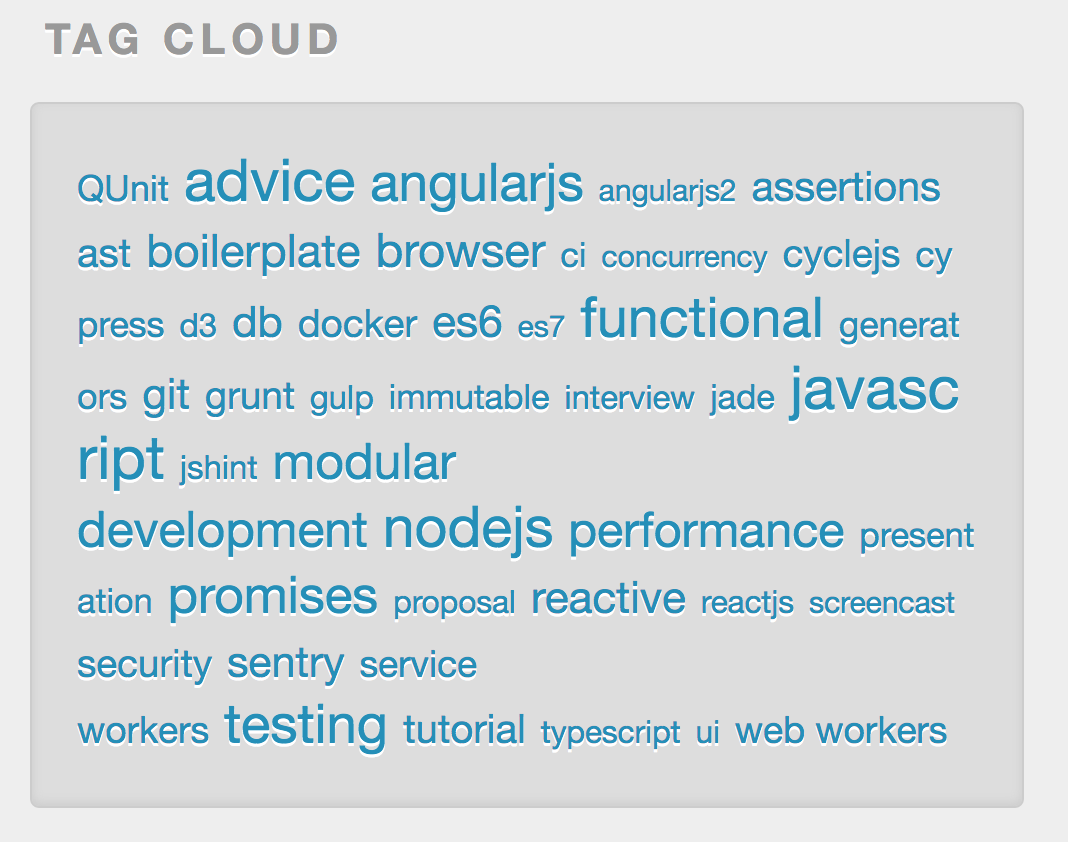
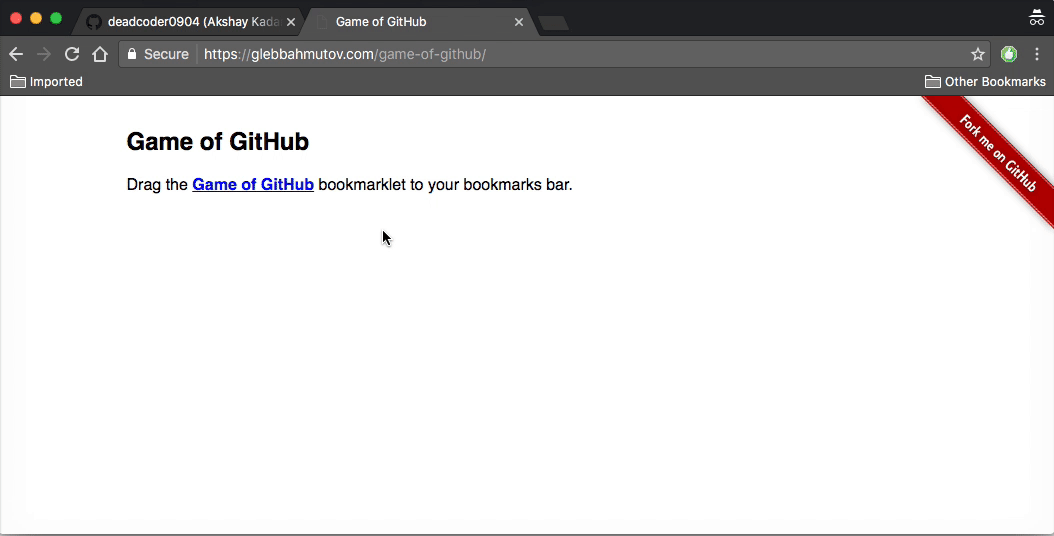


EveryScape
virtual tours
MathWorks
MatLab on the web
Kensho
finance dashboards
VP of Eng at

Testing, the way it should be

Cypress in action https://www.cypress.io/
2017
Software Engineer
2000 B.C. - Farmer
2000 B.C. - Want to be an engineer!
The word engineer (Latin ingeniator) is derived from the Latin words ingeniare ("to contrive, devise") and ingenium ("cleverness")
80 A.D. - Good to be an engineer!
1800 - Engineers rule
1960 - Science rules
Science: 📚 or ☠️

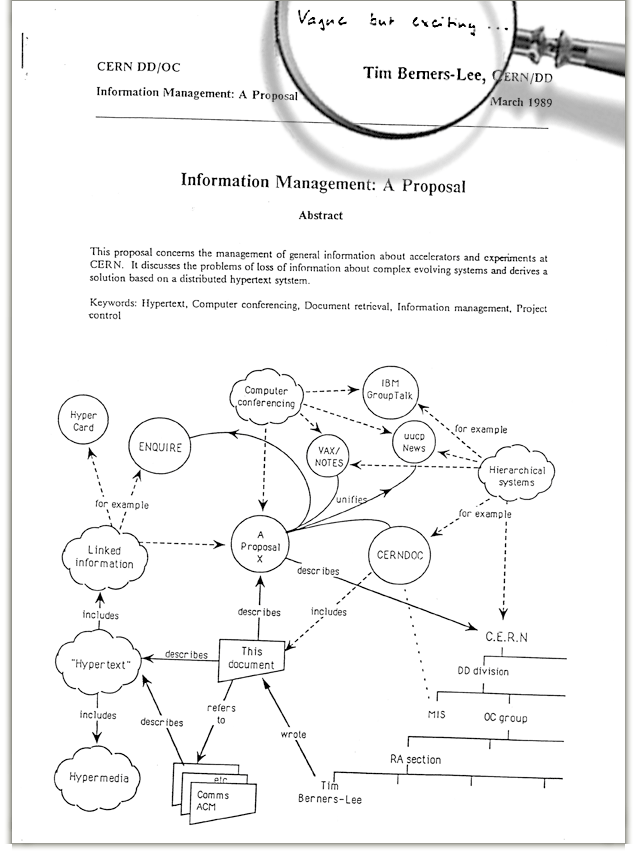
1989
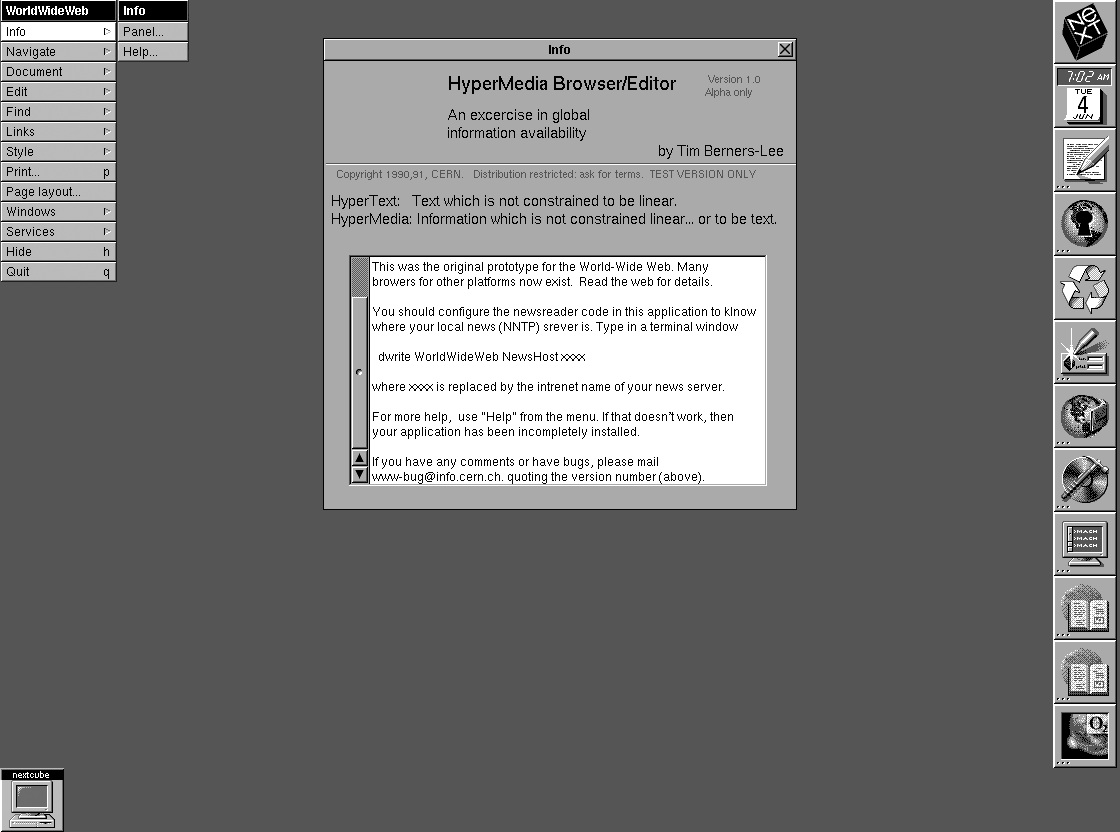
Edit and view HTML documents, 1991
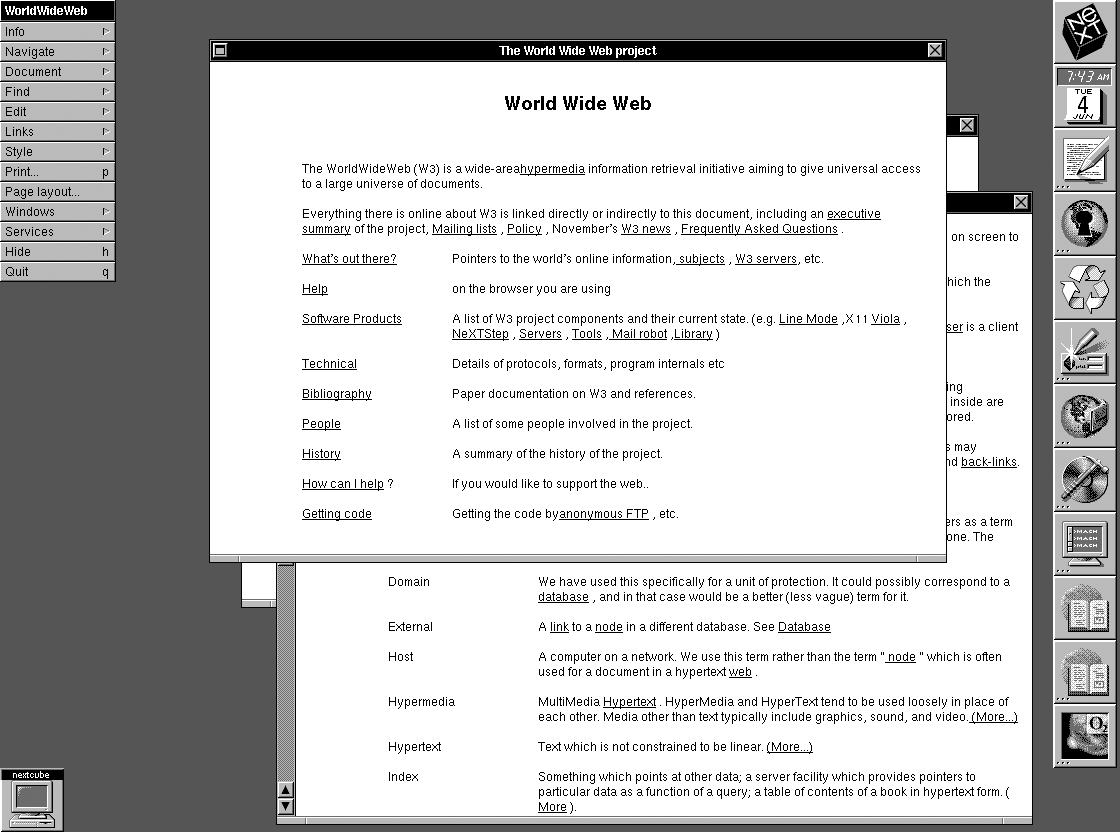
Nexus Browser, 1994
first website: info.cern.ch
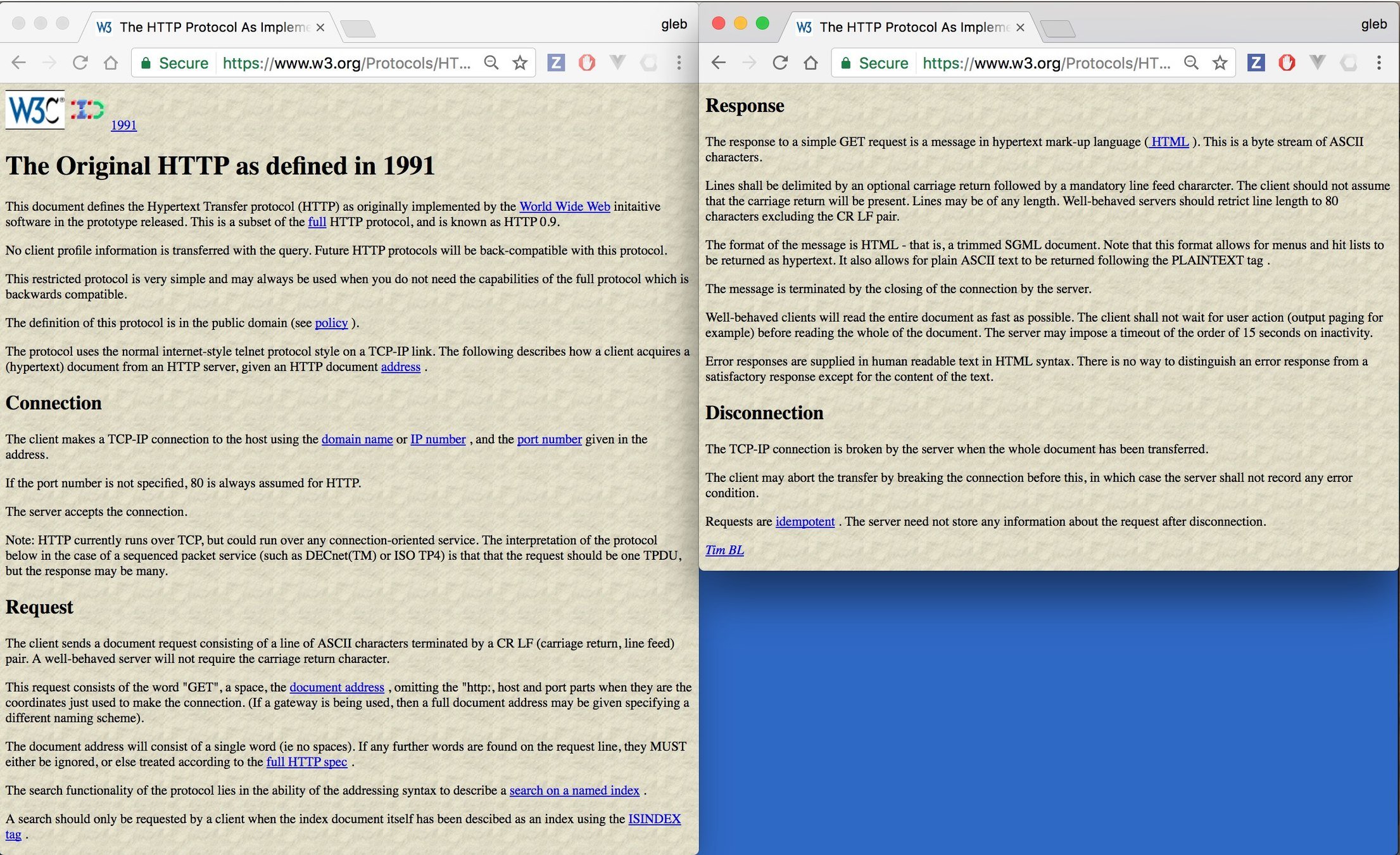
1991
HTTP/0.9

1991

Sir Tim Berners-Lee
Professor of Engineering in the School of Engineering with a joint appointment in the Department of Electrical Engineering and Computer Science at MIT
HTTP/0.9
1991
650 words
3800 characters
HTTP/0.9

1991
HTTP/0.9

1991
HTTP/0.9

If the port number is not specified, 80 is always assumed for HTTP
because port 79 and 81 were taken (RFC 1060)
1991
HTTP/0.9

The TCP-IP connection is broken by the server when the whole document has been transfered

1991
GET /fuzzy_bunnies.txt
HTTP/0.9

1991
The response to a simple GET request is a message in hypertext mark-up language ( HTML ). This is a byte stream of ASCII characters.
HTTP/0.9

1991
No error response codes
HTTP/0.9

1991
Only GET
No cookies / sessions / server state
HTTP/0.9
Y - you
A - aren't
G - gonna
N - need
I - it
What Problem Does HTTP/0.9 Solve?
<html>
<p>More info
<a href="http://foo.com/bar.html">here</a>
</p>
</html>I want to read this HTML document
<html>
<p>More info
<a href="http://foo.com/bar.html">here</a>
</p>
</html>H - hyper
T - text
T - transfer
P - protocol
<html>
<p>More info
<a href="http://foo.com/bar.html">here</a>
</p>
</html>GET /bar.html
<html>
...
</html>GET /bar.html
<html>
...
</html>HTTP relies on TCP to ask for and receive document
TCP
IP
TCP
IP
how?
where?
HTTP
HTTP performance is tied to TCP properties
1. Guaranteed data delivery
2. Guaranteed packet order
HTTP/0.9 should be celebrated

1991
Future HTTP protocols will be back-compatible with this protocol.
HTTP/0.9
1991 was
26 years ago ...
World Wide Web went from zero to "everywhere" in about two years
Then:
| Date | # of web sites |
|---|---|
| '93 | 130 |
| '94 | 2700 |
| '95 | 23,500 |
| '96 | 100,000 |
<html>
<p>See diagram
<img src="http://foo.com/bar.jpg" />
</p>
</html>I want to see this JPEG image
HTTP/1.0
We Are Gonna Need It (WAGNI)
HTTP/1.0
1996
RFC 1945
60 pages
GET /mypage.html HTTP/1.0
User-Agent: NCSA_Mosaic/2.0 (Windows 3.1)
200 OK
Date: Tue, 15 Nov 1994 08:12:31 GMT
Server: CERN/3.0 libwww/2.17
Content-Type: text/html
<HTML>
A page with an image
<IMG src="/myimage.gif">
</HTML>HTTP/1.0
-
Non-HTML data (images!)
-
Methods (HEAD & POST)
-
Status Codes
-
User preferences (User-Agent)
-
Format negotiation (Content-Type)
1996
RFC 1945
HTTP/1.1
Formalize best practices
HTTP/1.1
1999
RFC 2616
27 drafts, latest 2014
The Hypertext Transfer Protocol (HTTP) is a stateless application-level protocol for distributed, collaborative, hypertext information systems.
HTTP/1.1
-
Performance (Caching, connections)
-
Security (HTTPS, 3rd party cookies)
-
Usability (IP scarcity, error codes)
1999
RFC 2616
HTTP/RFC
IETF
The Internet Engineering Task Force (IETF)
make the Internet work better from an engineering point of view
The IETF's official products are documents called RFCs (Requests for Comments)
HTTP/1.1 is uniform and everywhere
Reality: multiple versions, implementations, extensions, working drafts
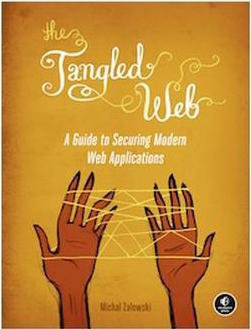
"The Tangled Web: A Guide to Securing Modern Web Applications"
by Michal Zalewski
ISBN-13: 978-1593273880
👍👍👍👍👍👍👍👍👍👍👍👍👍👍👍👍
GET /bar.html
<html>
title: bar
</html>*** **
bar.html
** ***
index.html
title: bar
*** **
bar.html
Give me the page ...
HTTP/1.1 is still /0.9
request
response
* I am really ignoring all server-to-server communication happening over HTTP
*
HTTP Request and Response
State (cookies)
Cache control
Security, security, security
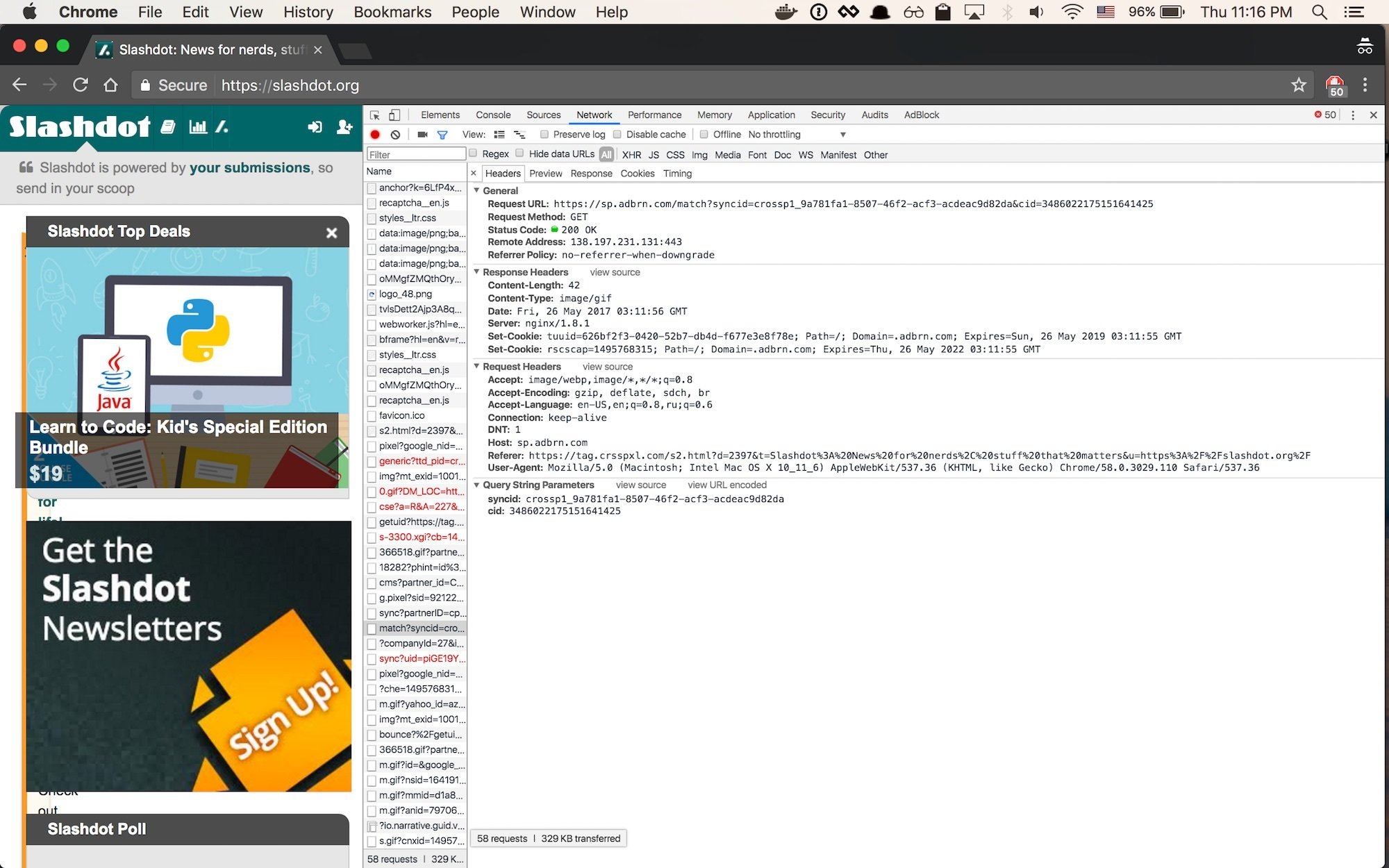
tracking pixels / cookies
58 requests to load
this page!
Related: Website Obesity Problem
Average page size: 2MB !
images, fonts, styles, scripts, ads
AJAX:
From websites
to web apps
i.e. "avoiding page reloads"
GET /index.html
*** **
** ***
<iframe src="bar.html">
index.html
GET /bar.html
1996: iframe in Internet Explorer
XMLHttpRequest
Gets the data from the server by a client side script
1999 Internet Explorer plugin
2004 Google Gmail, Kayak.com
2006 first spec draft
2014 latest spec draft
<button id="ajaxButton" type="button">Request</button>
<script>
var httpRequest;
document.getElementById("ajaxButton")
.addEventListener('click', makeRequest);
function makeRequest() {
httpRequest = new XMLHttpRequest();
httpRequest.onreadystatechange = alertContents;
httpRequest.open('GET', 'test.html');
httpRequest.send();
}
function alertContents() {
if (httpRequest.readyState === XMLHttpRequest.DONE) {
if (httpRequest.status === 200) {
alert(httpRequest.responseText);
} else {
alert('There was a problem with the request.');
}
}
}
</script>declarative HTML
imperative JavaScript
Fetch: new standard
<button id="ajaxButton" type="button">Request</button>
<script>
document.getElementById("ajaxButton")
.addEventListener('click', makeRequest);
function makeRequest() {
fetch('<some url>')
.then(r => r.text())
.then(alert, console.error)
}
</script>HTTP/1.1: Today
IP
TCP
HTTP
REST
GraphQL
2000
2012
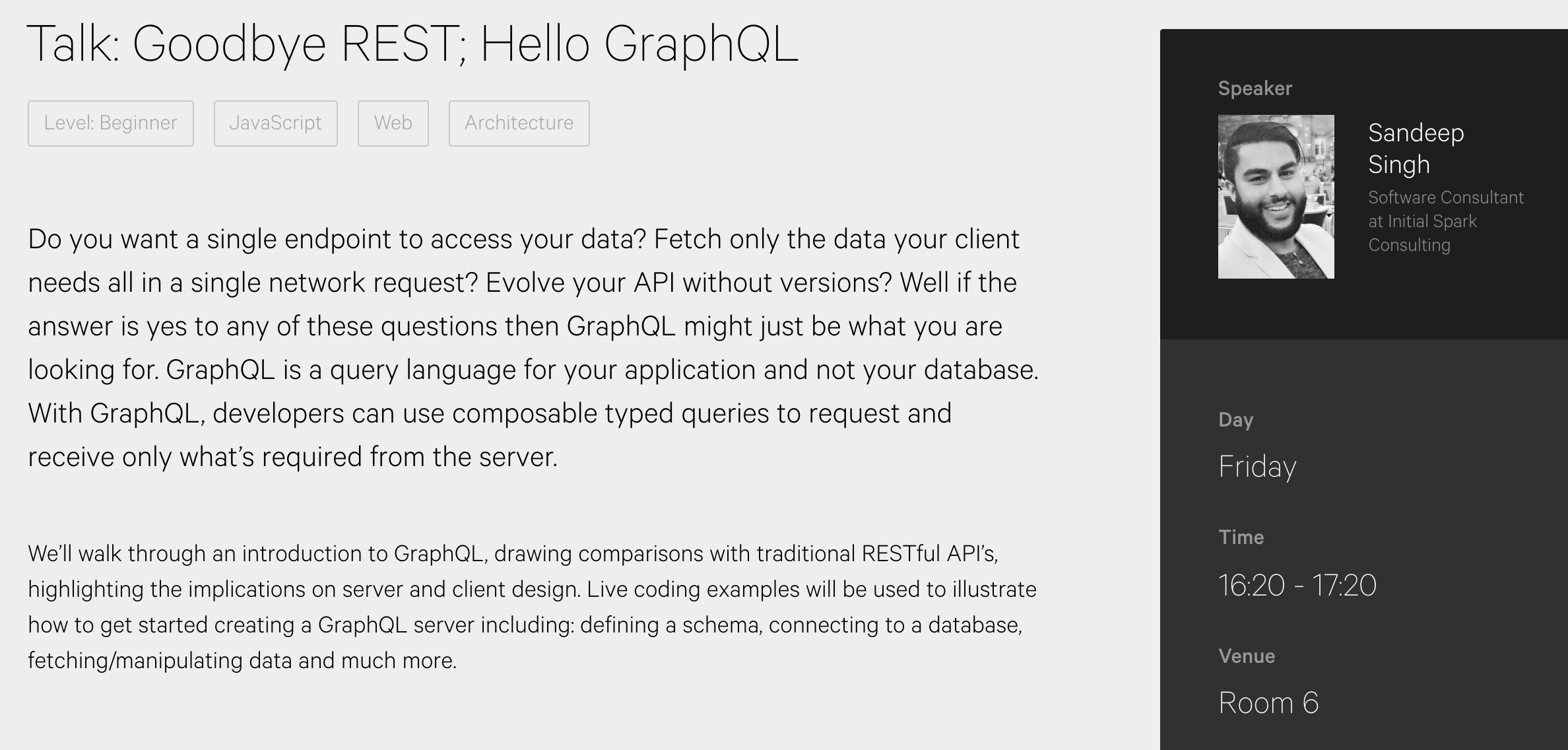
Client - Server communications
<div> ... </div>
<script>
....
</script>
index.html
<div> ... </div>
<script>
....
</script>
index.html
HTTP/1 => HTTP/2 or QUIC
WebSockets
WebRTC
ServiceWorker
browser
browser
WebSockets
ServiceWorker
HTTP/2
QUIC
Web Today
WebSockets
Persistent data connections
SYN (chronize)
Browser
Server
SYN - ACK
ACK
data
HTTP connections are expensive because TCP connections are expensive!
512
Browser
Server
TCP slow start
1024
ACK
2048
ACK
1024
ACK
HTTP connections are one way streets
HTTP/1.1 defined
Upgrade request header
GET /chat HTTP/1.1
Host: server.example.com
Upgrade: websocket
Connection: Upgrade
HTTP/1.1 101 Switching Protocols
Upgrade: websocket
Connection: UpgradeFeb 2010 - Chrome, Safari
Dec 2011 - RFC 6455
WebSockets 🚀
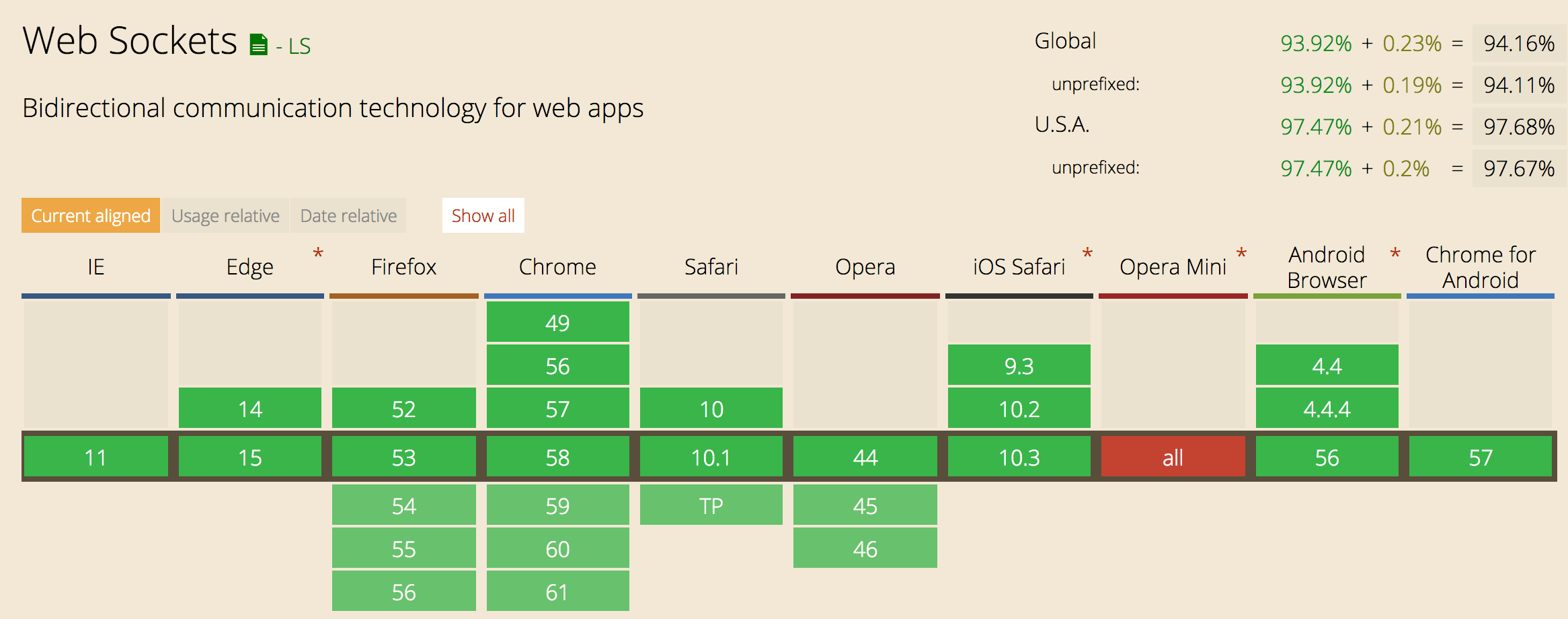
const uri = 'ws://echo.websocket.org/'
const websocket = new WebSocket(uri)
websocket.onopen = function(evt) { ... }
websocket.onclose = function(evt) { ... }
websocket.onmessage = function(evt) { ... }
websocket.onerror = function(evt) { ... }WebSocket: Event emitter
websocket.onmessage = function(evt) {
console.log(evt.data)
evt.send('my response')
}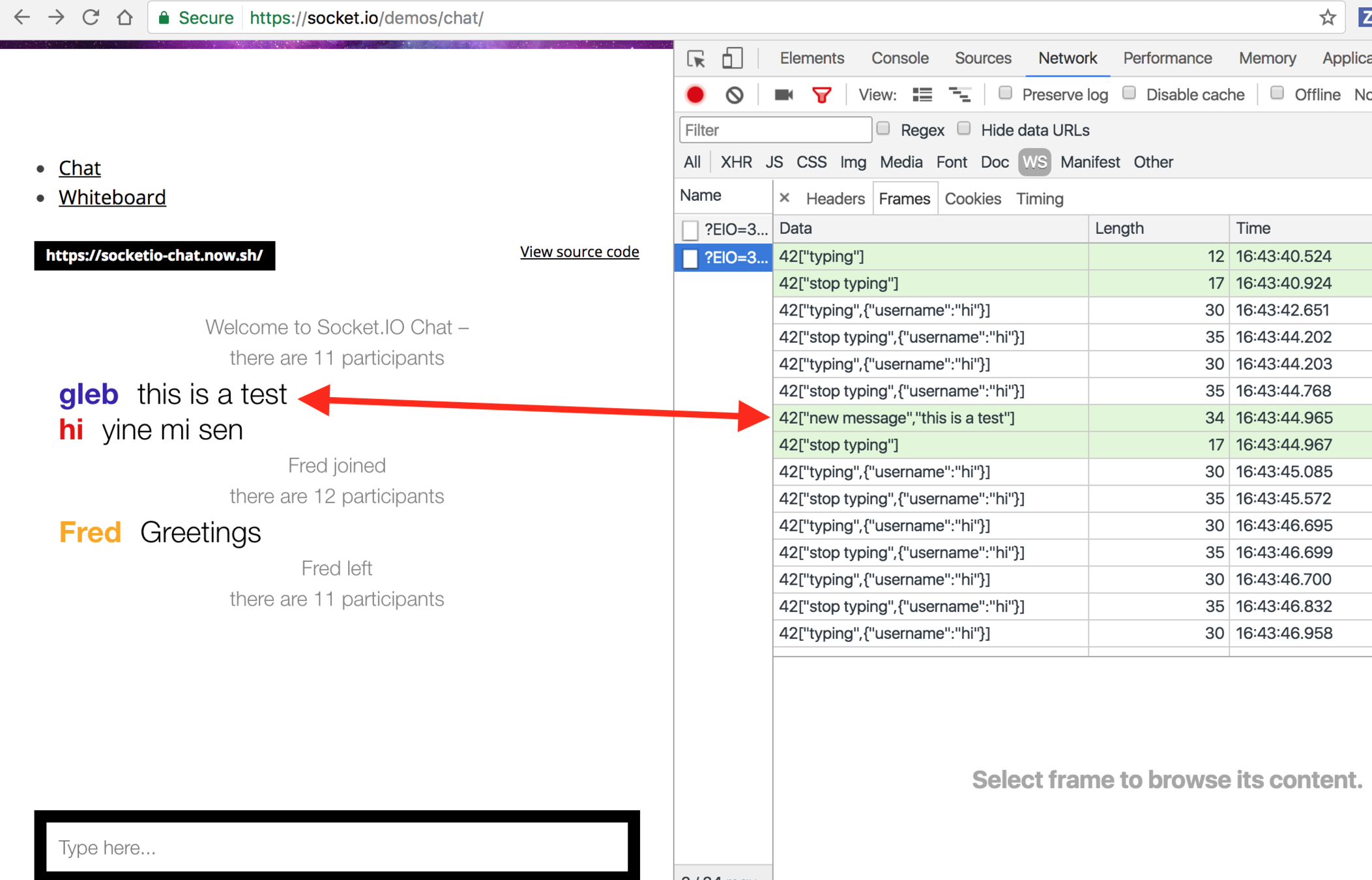
// server receives message from one socket
// and broadcasts it to others
socket.on('new message', function (data) {
socket.broadcast.emit('new message', {
username: socket.username,
message: data
})
})Typical server code (not part of WebSocket standard)
Built on top of WebSockets
The realtime JavaScript backend
Instant Realtime and REST APIs with Node.js
Socket.IO enables real-time bidirectional event-based communication.
It works on every platform, browser or device, focusing equally on reliability and speed.
The realtime JavaScript backend
Instant Realtime and REST APIs with Node.js
Socket.IO enables real-time bidirectional event-based communication.
It works on every platform, browser or device, focusing equally on reliability and speed.
Every time you see "realtime" it means WebSockets
IP
TCP
HTTP
WebSockets
Upgrade header
WebSockets
Web Today
WebSockets
ServiceWorker
HTTP/2
QUIC
HTTP is dead
Long live HTTPS
The browser APIs worth discussing all require secure connections
http://localhost or https://...

Usually a single command!
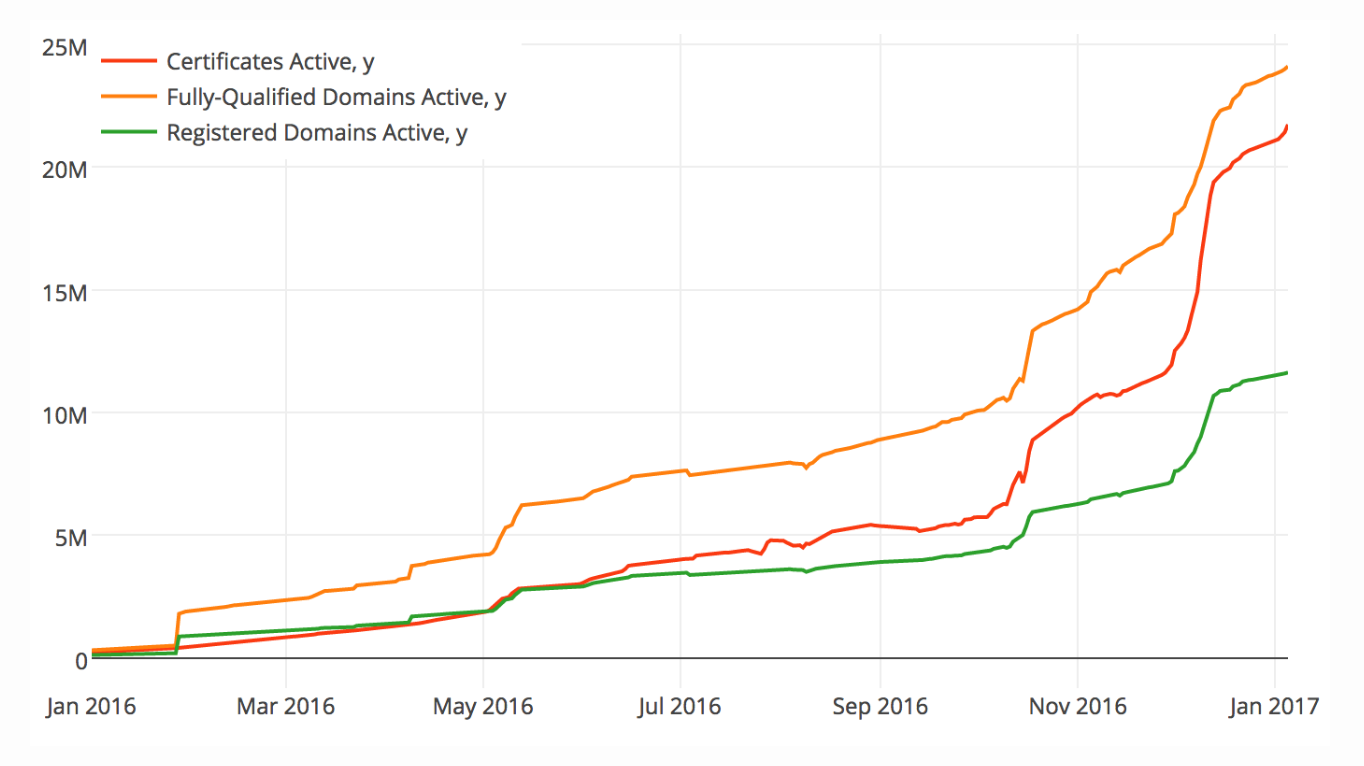
... 250k new certificates per day ...
Browser
Server
HTTPS
connections are expensive because
TCP + TLS handshakes!
data
ServiceWorker
Blurring the line between client and server
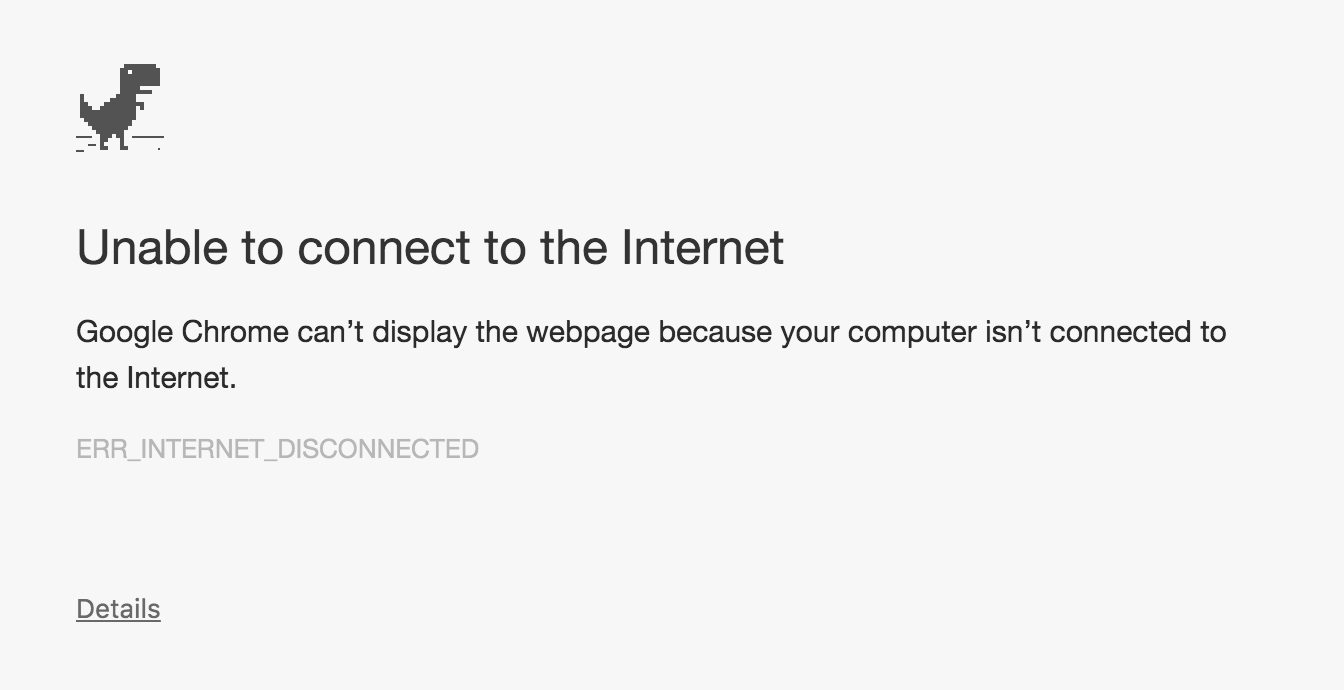
If a tree falls while you are in the forest ...
<html manifest="example.appcache">
...
</html>Application Cache
CACHE MANIFEST
# v1 2011-08-14
index.html
style.css
image1.png
# Use from network if available
NETWORK:
network.html
# Fallback content
FALLBACK:
/ fallback.htmldeclarative list
Application Cache
Turns out declaring caching strategy is hard.
ServiceWorker
Server
browser
Web Workers
ServiceWorker
Transforms
the response
Transforms
the request
Smart caching
OFFLINE SUPPORT
Image / video transcoding
Background data sync
Load ServiceWorker
navigator.serviceWorker.register(
'app/my-service-worker.js')Chrome, Opera, Firefox
Must be https
Inside ServiceWorker
self.addEventListener('install', ...)
self.addEventListener('activate', ...)
self.addEventListener('message', ...)
self.addEventListener('push', ...)self.addEventListener('fetch', function (event) {
console.log(event.request.url)
event.respondWith(...)
})
// Cache APIself.addEventListener('install', e => {
const urls = ['/', 'app.css', 'app.js']
e.waitUntil(
caches.open('my-app')
.then(cache =>
cache.addAll(urls))
)
})Cache resources on SW install
self.addEventListener('fetch', e => {
e.respondWith(
caches.open('my-app')
.then(cache =>
cache => match(e.request))
)
})Return cached resource
Offline support using ServiceWorker
Fetch event
browser
ServiceWorker
Request
Response
Server
Server
browser
ServiceWorker
Request
Response
express.js
http.ClientRequest
JavaScript
http.ServerResponse
JavaScript
Fetch event
browser
ServiceWorker
Server
express.js
Server-Side Rendering
Server
browser
ServiceWorker
express.js
http.ClientRequest(Request)
http.ServerResponse(Response)
Offline SSR-like Web Apps
Server inside ServiceWorker
Express-service
Video: https://youtu.be/4axZ3D75Llg?t=31m30s
The library: github.com/bahmutov/express-service
Blog post with examples: Run Express server in your browser
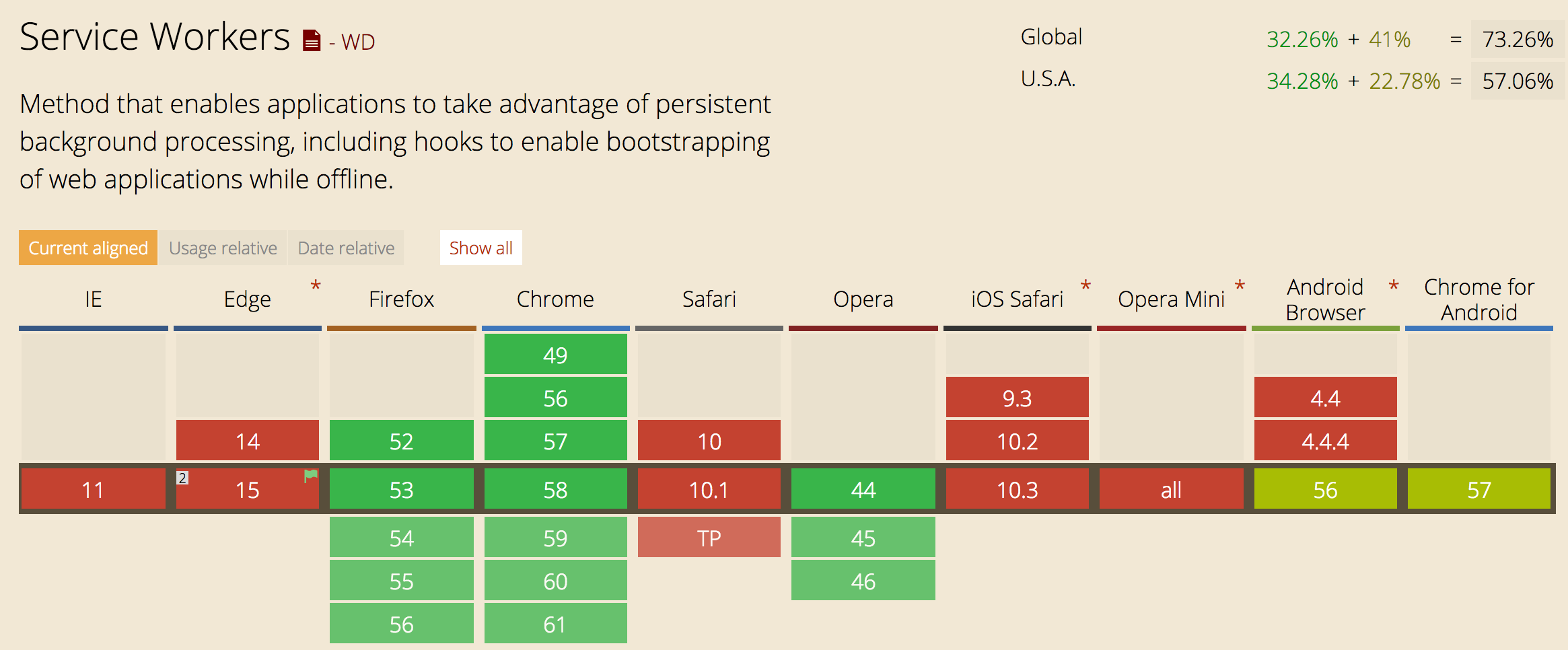
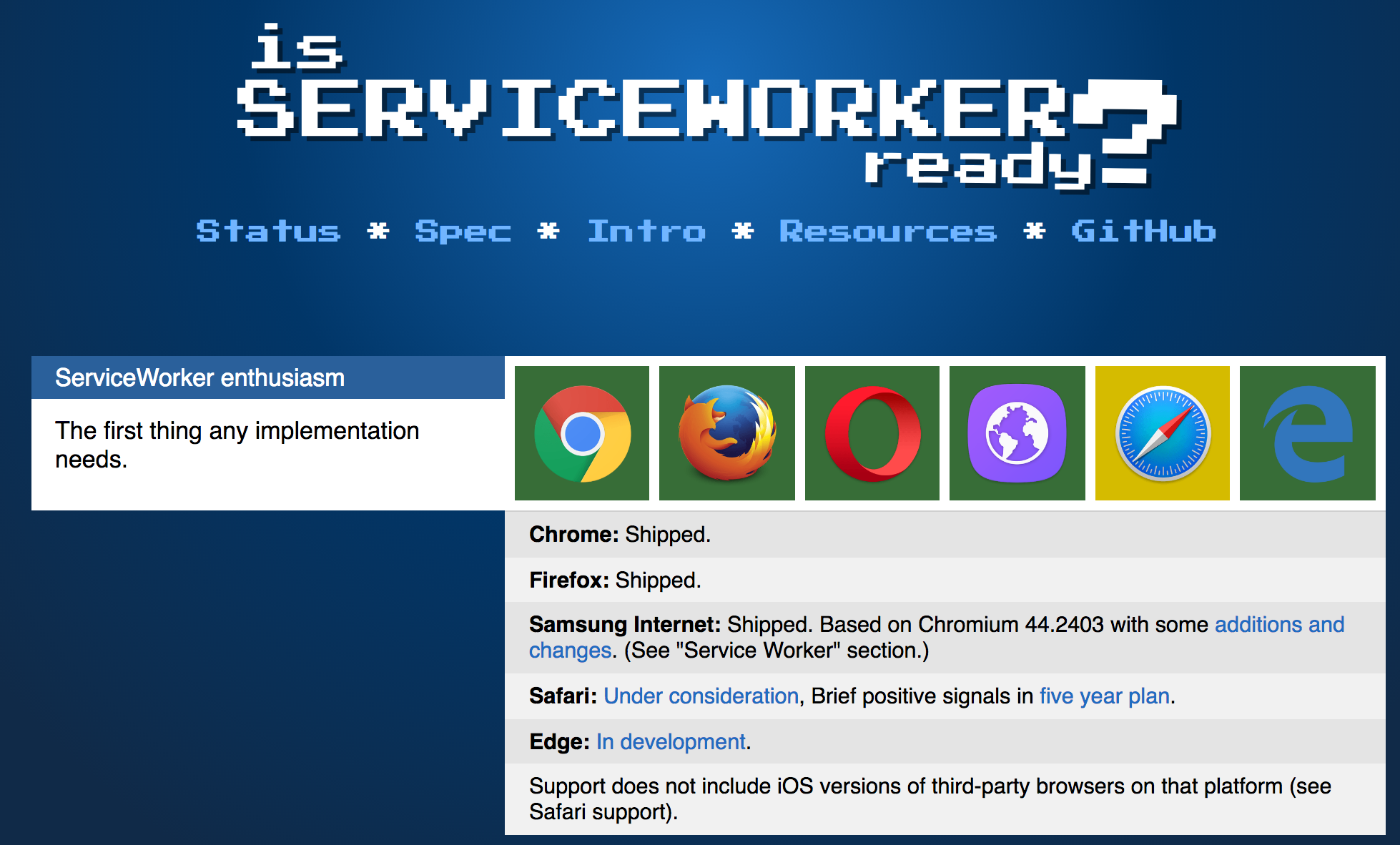
Web Today
WebSockets
ServiceWorker
HTTP/2
QUIC
⚠️ NDC Oslo ⚠️
⚠️ Overflow Room ⚠️
HTTP/2 will be discussed next
⚠️ NDC Oslo ⚠️
⚠️ Overflow Room ⚠️
You don't even need to switch audio
⚠️ NDC Oslo ⚠️
⚠️ Overflow Room ⚠️
Just 👀 at these slides!
HTTP/2
Making web faster
*
HTTP/1.1
- How to quickly load 200 resources?
- How to load some resources first?
- How to avoid duplicate data overhead?

Source: Ilya Grigorik https://bit.ly/http2-opt
2009 - Google starts SPDY
Need for Speed 🚤
2015 - RFC 7540
binary, multiplexed protocol - 55% speed up on top sites!
H2: Binary Framing Layer
H2: Multiplexing
H2: Stream Prioritization
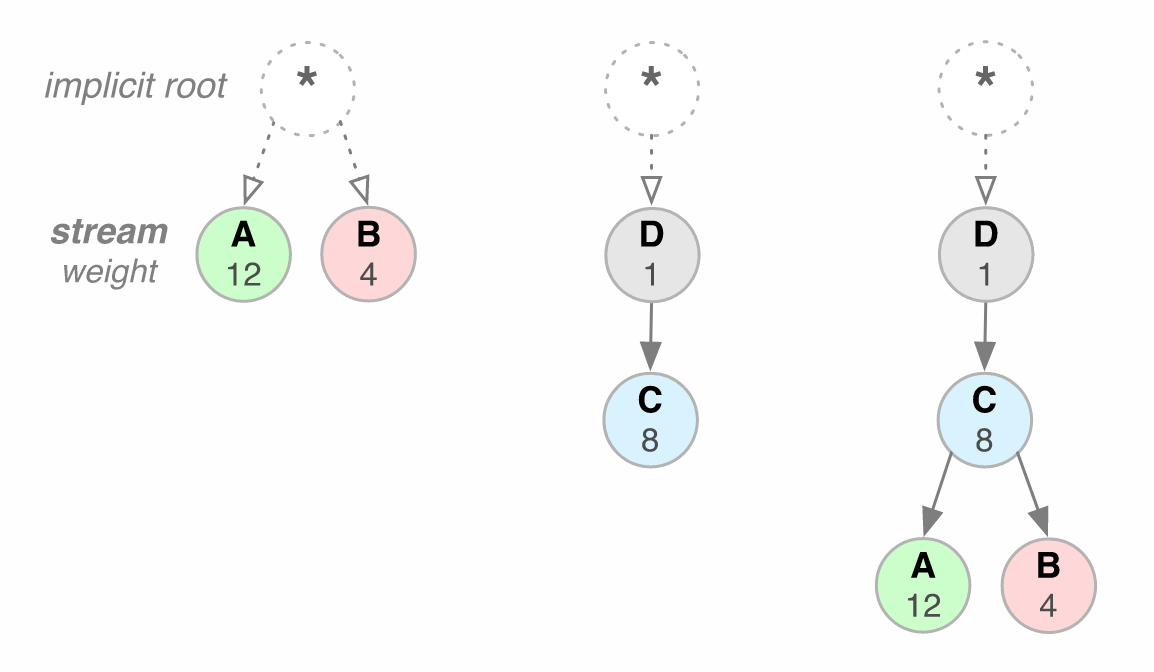
3:1
then
then
then
3:1
$ curl -I https://github.com
HTTP/1.1 200 OK
Server: GitHub.com
Date: Sat, 03 Jun 2017 03:08:50 GMT
Content-Type: text/html; charset=utf-8
Status: 200 OK
Cache-Control: no-cache
Vary: X-PJAX
X-UA-Compatible: IE=Edge,chrome=1
Set-Cookie: logged_in=no; domain=.github.com; path=/;
expires=Wed, 03 Jun 2037 03:08:50 -0000; secure; HttpOnly
Set-Cookie: _gh_sess=eyJzZXNzaW9uX2lkIjoiYzFlYTc0YTQ0OTNhZTdlNzI4MTgwNzI5N2QyNTlkNWMiLCJfY
3NyZl90b2tlbiI6IngzaHhRREMxNEpLUFNid1ZmMkc4d0N1OG1xdjZ3MkdmWmh4YkRFazNYQkU9In0%3D--b7171bd148da0b79b248fb561b8bfd4aadf16ff5; path=/; secure; HttpOnly
X-Request-Id: 75c9420698c53b1a707b10b2a7a510cc
X-Runtime: 0.056786
Content-Security-Policy: default-src 'none'; base-uri 'self'; block-all-mixed-content;
child-src render.githubusercontent.com; connect-src 'self' uploads.github.com
status.github.com collector.githubapp.com api.github.com www.google-analytics.com
github-cloud.s3.amazonaws.com github-production-repository-file-5c1aeb.s3.amazonaws.com
github-production-user-asset-6210df.s3.amazonaws.com wss://live.github.com; font-src
assets-cdn.github.com; form-action 'self' github.com gist.github.com; frame-ancestors
'none'; img-src 'self' data: assets-cdn.github.com identicons.github.com
collector.githubapp.com github-cloud.s3.amazonaws.com *.githubusercontent.com;
media-src 'none'; script-src assets-cdn.github.com; style-src 'unsafe-inline'
assets-cdn.github.com
Strict-Transport-Security: max-age=31536000; includeSubdomains; preload
Public-Key-Pins: max-age=5184000; pin-sha256="WoiWRyIOVNa9ihaBciRSC7XHjliYS9VwUGOIud4PB18="; pin-sha256="RRM1dGqnDFsCJXBTHky16vi1obOlCgFFn/yOhI/y+ho="; pin-sha256="k2v657xBsOVe1PQRwOsHsw3bsGT2VzIqz5K+59sNQws="; pin-sha256="K87oWBWM9UZfyddvDfoxL+8lpNyoUB2ptGtn0fv6G2Q="; pin-sha256="IQBnNBEiFuhj+8x6X8XLgh01V9Ic5/V3IRQLNFFc7v4="; pin-sha256="iie1VXtL7HzAMF+/PVPR9xzT80kQxdZeJ+zduCB3uj0="; pin-sha256="LvRiGEjRqfzurezaWuj8Wie2gyHMrW5Q06LspMnox7A="; includeSubDomains
X-Content-Type-Options: nosniff
X-Frame-Options: deny
X-XSS-Protection: 1; mode=block
X-Runtime-rack: 0.060928
Vary: Accept-Encoding
X-Served-By: e878d09eac725c89f5f15204c1326660
X-GitHub-Request-Id: F1E1:2F2B:6F2906B:A48C07A:593228422100 characters
~55% of HTTP/0.9 spec!
H2: Header Compression
pseudo headers
H2: Header Compression
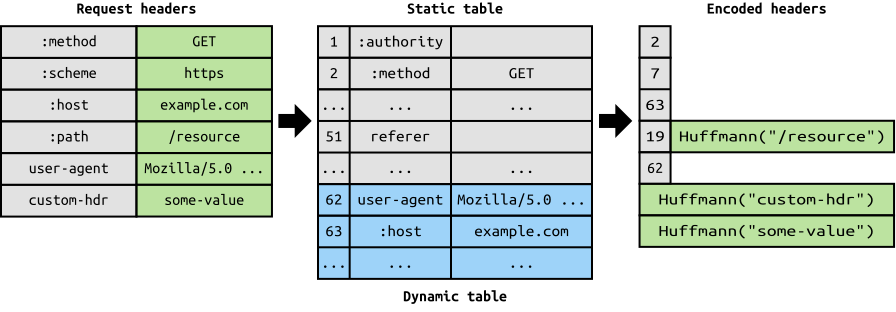
Common headers static table on client and server
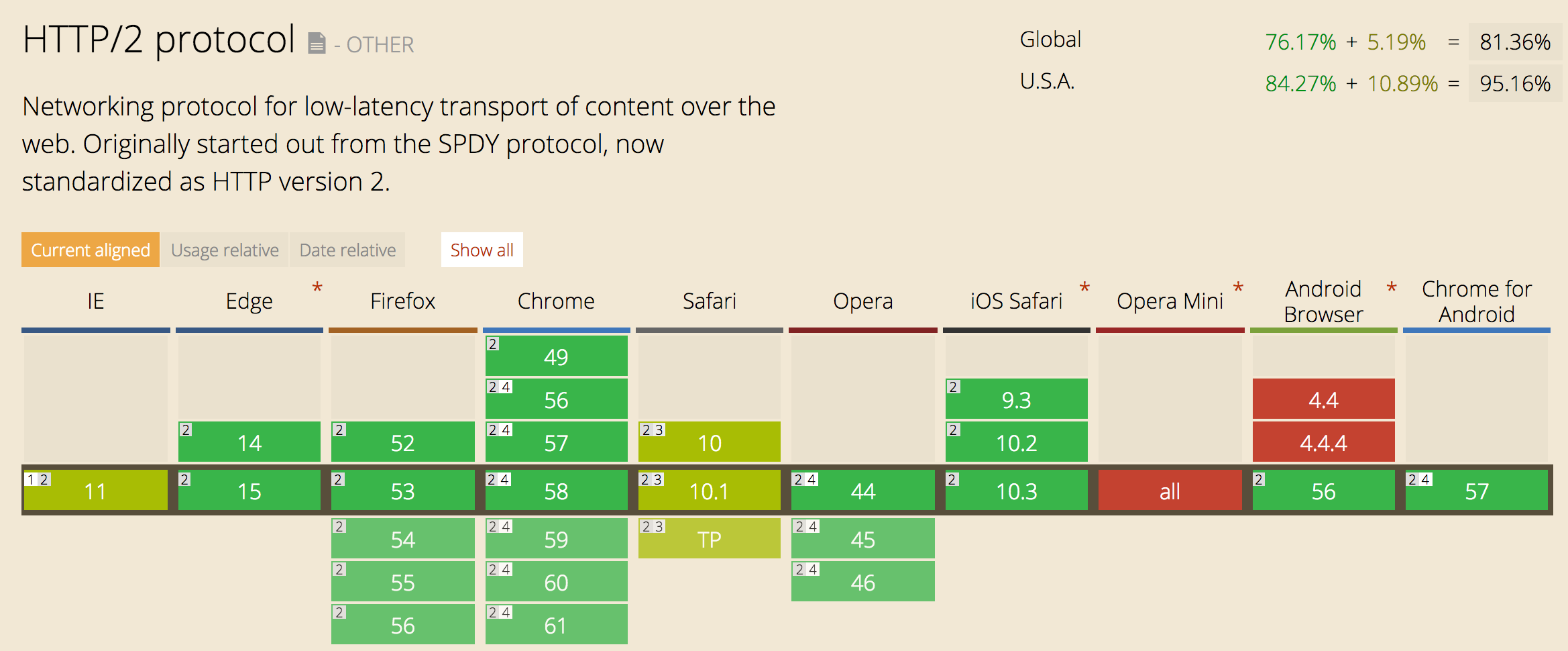
14% of all websites (Jun '17)
HTTP/2
was 8% Jun '16
SPDY is at 8%
“One great metric around that which I enjoy is the fraction of connections created that carry just a single HTTP transaction (and thus make that transaction bear all the overhead). For HTTP/1 74% of our active connections carry just a single transaction – persistent connections just aren’t as helpful as we all want. But in HTTP/2 that number plummets to 25%. That’s a huge win for overhead reduction.” — Patrick McManus, Mozilla.
H2 is succeeding in minimizing delays
HTTP/2 Information
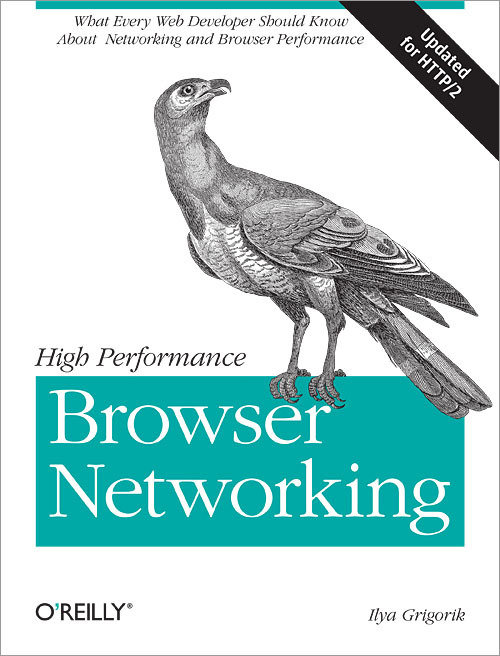
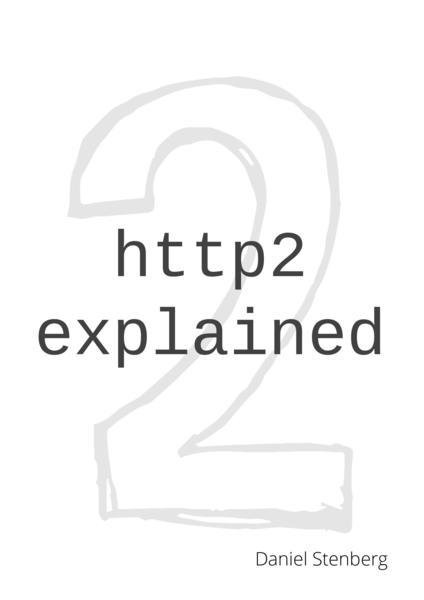
chrome://net-internals https://www.youtube.com/watch?v=bG2GhHkPP4Q
HTTP/2 Server Push
I know what you want
<html>
<img src="photo.jpg"/>
</html>...
<img src="photo.jpg"/>
...GET index.html
Server
GET photo.jpg
Client
?
photo.jpg
index.html
time
Server Push
<html>
<img src="photo.jpg"/>
</html>Server
GET index.html
Client
photo.jpg
index.html
...
<img src="photo.jpg"/>
...GET photo.jpg
Already have it!
time
Server Push
<html>
<link rel="stylesheet"
href="app.css">
<script src="app.js">
</script>
</html>Server
GET index.html
Client
app.css
index.html
app.js
Great way to replace HTTP/1.1 practice of inlining small styles, scripts, images in the page
time
const server = require('spdy')
const express = require('express')
const app = express()
app.use(express.static('public'))
const tlsOptions = {
key: fs.readFileSync('./server.key'),
cert: fs.readFileSync('./server.crt')
}
const port = 5000
server.createServer(tlsOptions, app)
.listen(port, err => { ... })Server Push in NodeJS
Make server using spdy
const image = fs.readFileSync('./image.jpg')
const options = {
request: {accept: 'image/*'},
response: {'content-type': 'image/jpeg'}
}
function serveHome (req, res) {
if (res.push) {
const stream = res.push('/image.jpg', image, options)
stream.end(image)
}
}
app.get('/', serveHome)Server Push in NodeJS
Push resource if client/server/proxy supports it
No NGINX support as of March '17, use https://github.com/indutny/bud
*
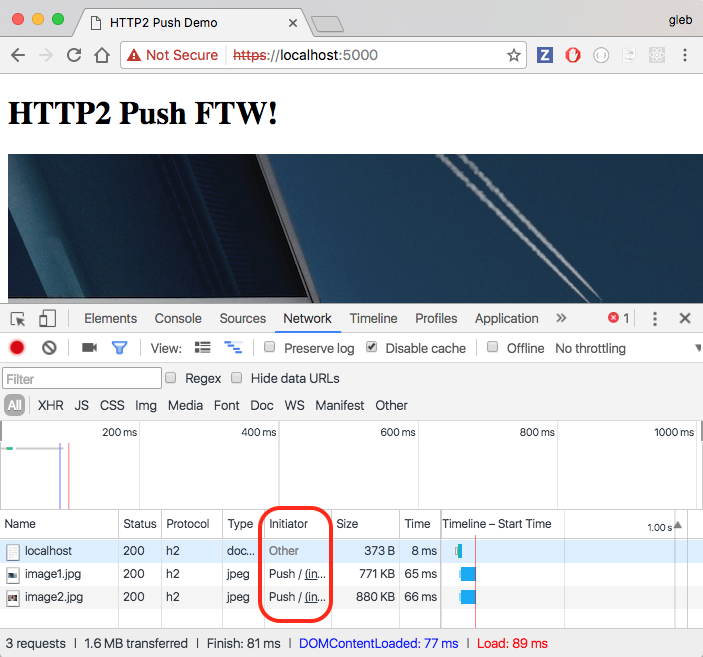
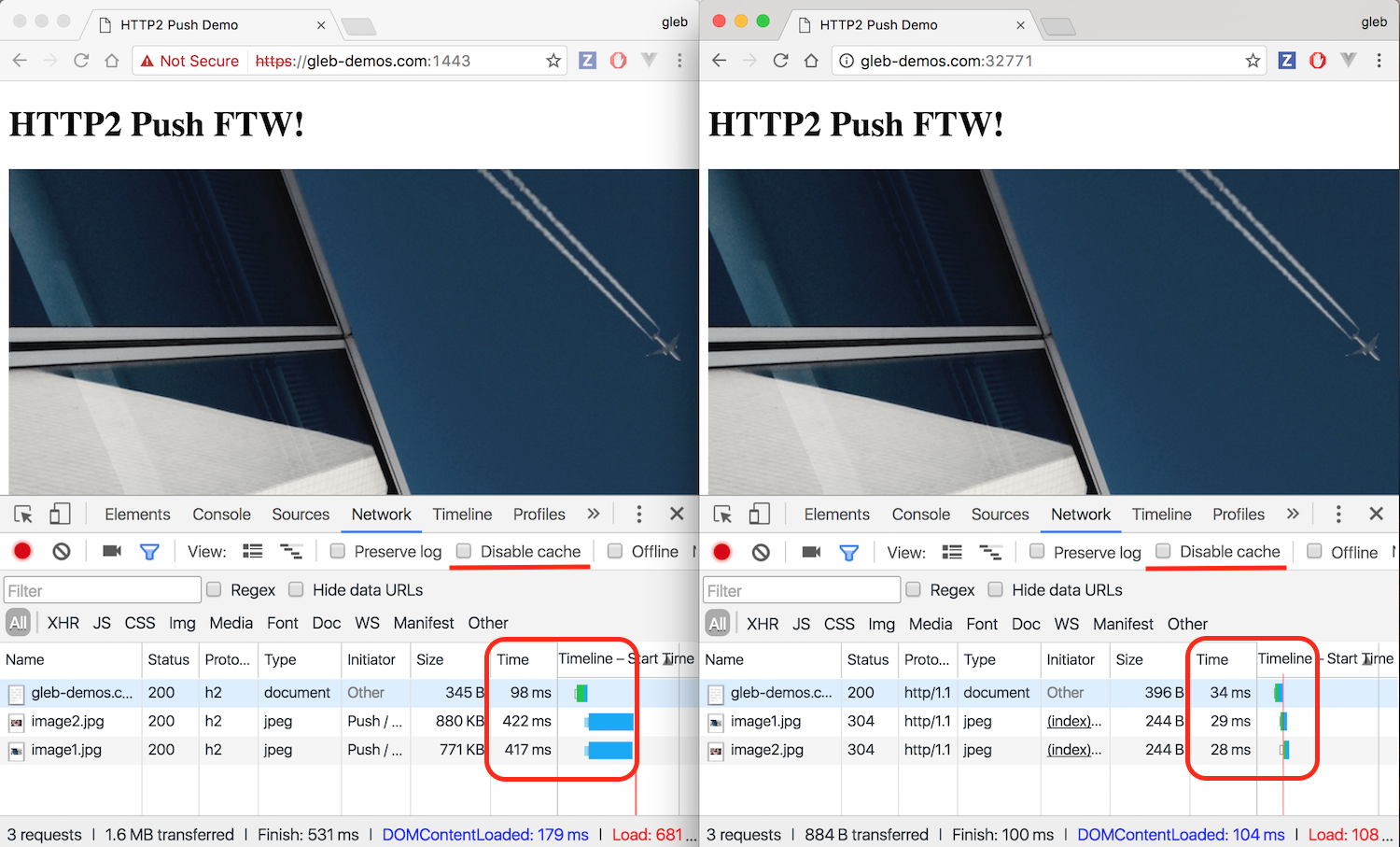
Server Push always pushed the resources even if they might be already in the browser's cache.
Server Push Behavior
"Being Pushy" by Yoav Weiss
"HTTP/2 push is tougher than I thought" by Jake Archibald
"cache-digest"
<html>
<link rel="stylesheet"
href="app.css">
<script src="app.js">
</script>
</html>Server
GET index.html
Client
index.html
I have "app.css" <hash>,
"app.js" <hash>
Not going to push app.css and app.js
time
My opinion:
Wait for Server Push to be refined
HTTP/2 is changing the best performance practices
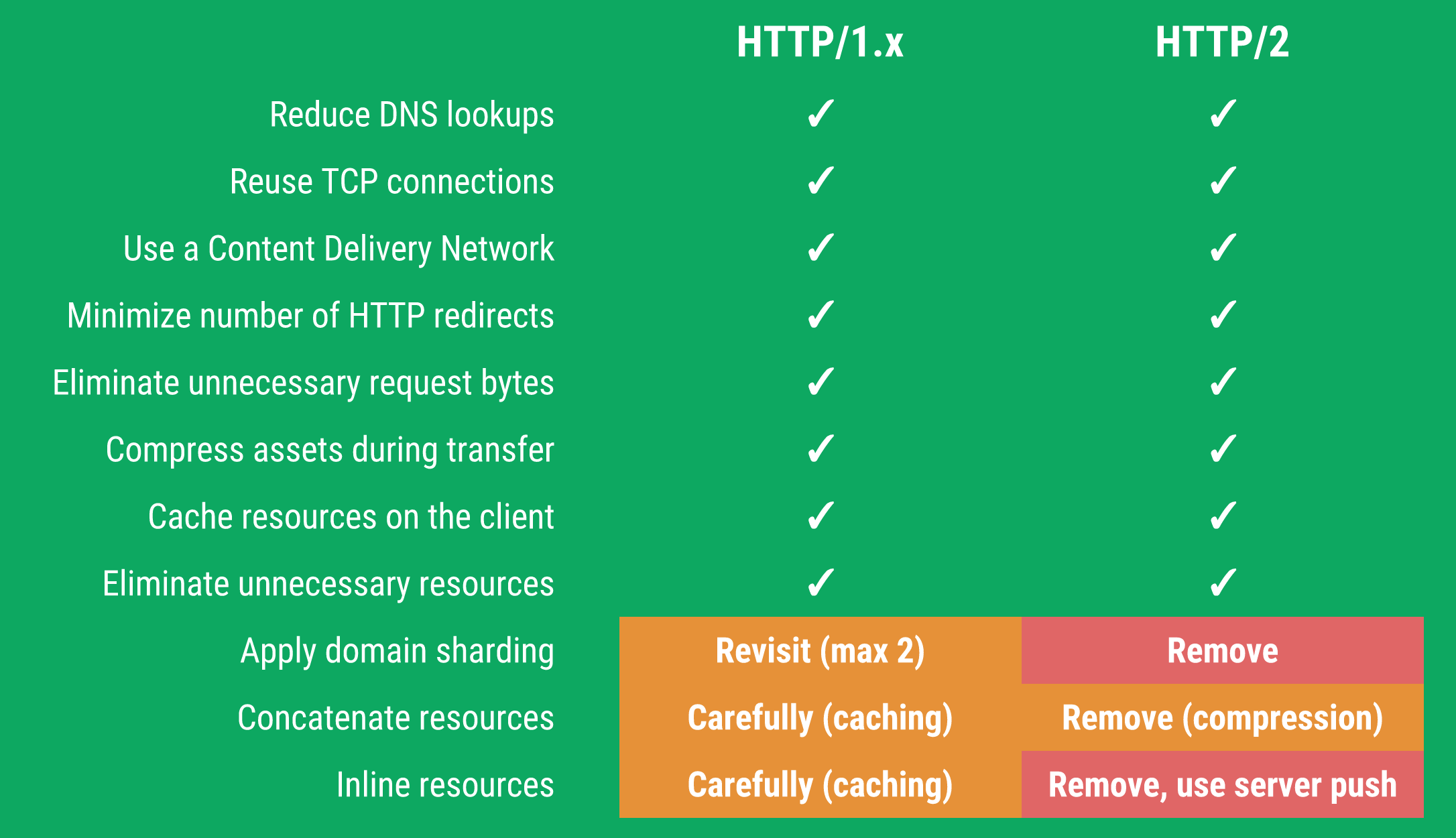
H2 changes some performance best practices
Source: Ilya Grigorik https://bit.ly/http2-opt
DO LESS WORK
H2: 4 main features
Multiplexing
Multiple streams over same TCP connection
Compression
Headers and binary frames
H2: 4 main features
Flow control
Dependency mechanism among resources
Resource push
Server preemptively pushes resources to the client
H2: Security Flaws
-
Slow Read
-
Stream Abuse
-
HPACK Bomb
-
Dependency DoS
multiplexing
compression
flow control
Web Today
WebSockets
ServiceWorker
HTTP/2
QUIC
HTTP/2 Achilles' heel
H2: If a packet is lost
TCP: all have to wait!
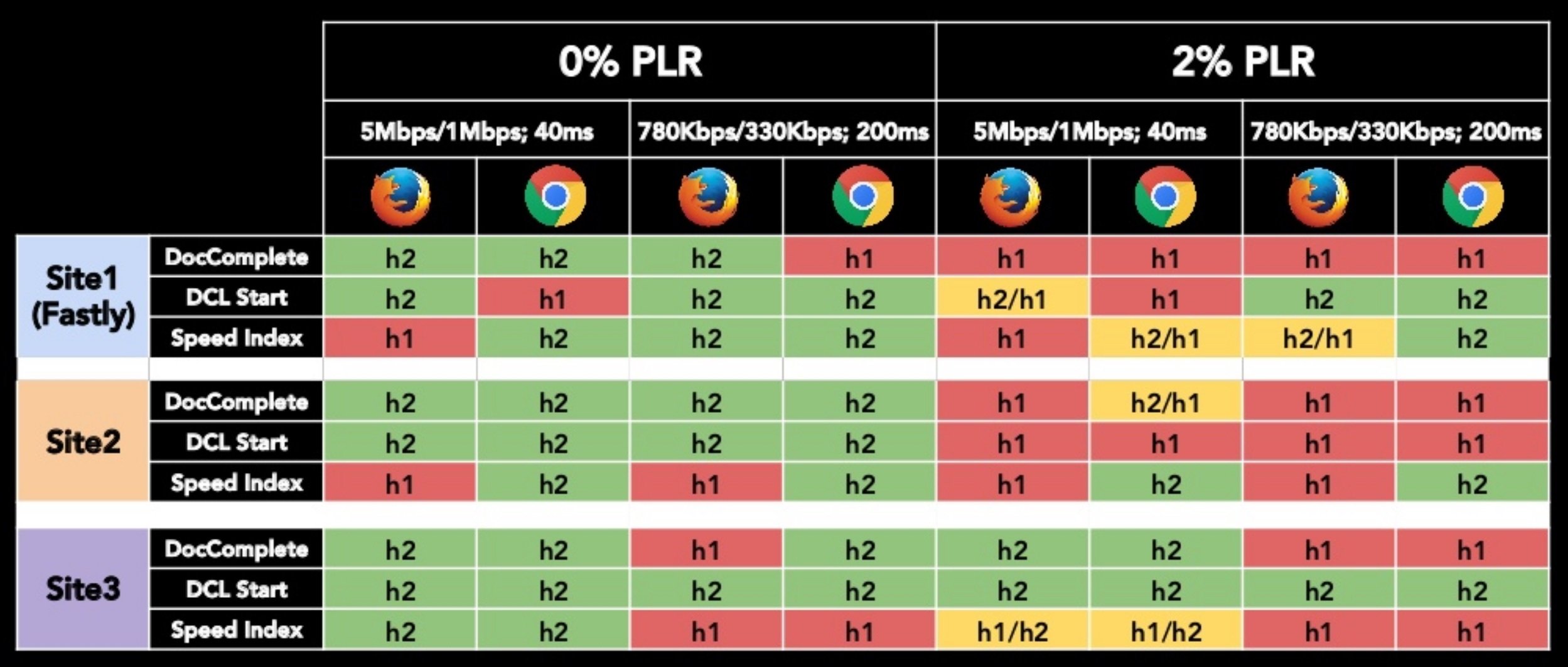
Hooman Beheshti - HTTP/2: What no one is telling you
video: https://vimeo.com/190932569
PLR - Packet Loss Rate
IP
TCP
HTTP/1.1
WebSockets
HTTP/2
TLS
Order of packets guarantee
TCP
HTTP/1.1
WebSockets
HTTP/2
TLS
UDP
IP
QUIC
QUIC
like SPDY but over UDP
'99
2009
2015
HTTP/1.1
SPDY
HTTP/2
QUIC
Secret: many Google properties communicate with Chrome using QUIC
HTTP/0.9
'91
'92

HTTP/1 - SPDY - HTTP/2 - QUIC timeline
2013
(deprecated)
Enable QUIC: chrome://flags/#enable-quic

chrome://net-internals/#quic


Visit Google property
Honorable mention: WebRTC data channel
Server
Content is coming from the server
As more users connect ...
Server
We need a bigger server 💸
Server
We need a bigger server 💸
🔥🔥🔥
HBO's Silicon Valley "Two Days of the Condor", season 2 finale
P2P using data channel in WebRTC
Server
offline != server is down
Checkout:
A peer-to-peer hypermedia protocol
to make the web faster, safer, and more open.
Real-Time Communications capabilities via simple APIs
Dat is the distributed data sharing tool
a streaming torrent client for the web browser and the desktop
+ WebRTC
WebSockets
ServiceWorker
HTTP/2
QUIC
HTTP: Conclusions
Every version of HTTP
and related protocols was a solution to a real-world problem
HTTP: Conclusions
Most of the time the problem was not apparent until real world adoption
HTTP/0.9 - loading remote HTML documents
HTTP/1.x - popularity and growth of World Wide Web
Ajax - loading data without full page reload
WebSockets - realtime communication with the server
ServiceWorker - scriptable caching
HTTP/2 - performance for loading modern websites
QUIC - an alternative take on performance for loading modern websites
Tomorrow a new protocol will appear that will try to solve HTTP/2's and QUIC's problems
Only failed products stay unchanged
Tomorrow a new protocol will appear that will try to solve HTTP/2's and QUIC's problems
Gleb Bahmutov
👏 NDC Oslo
It's not your parents' HTTP
👏 Cypress.io
Thank you